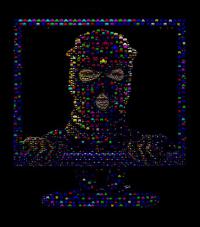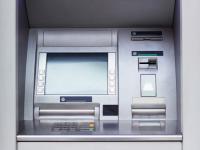-
Researchers look for ways to keep cars safe from hacking

In 2015, two researchers remotely hacked a Jeep Cherokee being driven by a reporter who documented how the researchers controlled everything from the car’s radio and media console to its brakes and steering. For computer scientists at the University of Arkansas at Little Rock, the exercise demonstrated how vulnerable smart cars with GPS, Bluetooth, and Internet connections are to cyberattacks – and they decided to do something about it.
-
-
After the NSA hack: Cybersecurity in an even more vulnerable world

It is looking increasingly likely that computer hackers have in fact successfully attacked what had been the pinnacle of cybersecurity – the U.S. National Security Agency (NSA). Cyberweapons and their capabilities are becoming an increasing part of international relations, forming part of foreign policy decisions and even sparking what has been called a “cyber arms race.” The cyberattack on the NSA’s – specifically, the attack on the Equation Group, the NSA’s spying element – may be part of this global interplay. The attack is also further proof of the cybersecurity industry’s axiom about the highly asymmetric probabilities of successful attack and successful defense: Attackers need to succeed only once; defenders have to be perfect every time. As sophisticated as NSA’s highly secure network is, the agency cannot ever fully protect itself from cyberattackers.
-
-
People disregard security warnings on computers because these warnings come at bad times

Software developers listen up: if you want people to pay attention to your security warnings on their computers or mobile devices, you need to make them pop up at better times. A new study finds the status quo of warning messages appearing haphazardly — while people are typing, watching a video, uploading files, etc. — results in up to 90 percent of users disregarding them.
-
-
New hacking technique stealthily changes memory of virtual servers
For the first time ever a team of Dutch hacking experts managed to alter the memory of virtual machines in the cloud without a software bug, using a new attack technique. With this technique an attacker can crack the keys of secured virtual machines or install malware without it being noticed.
-
-
Sophisticated espionage platform covertly extracts encrypted government communications
Kaspersky Lab announced the other day that its researchers have discovered what they described as a “nation-state threat actor” — named ProjectSauron — who was targeting state organizations. “The cost, complexity, persistence, and ultimate goal of the operation, stealing confidential and secret information from state-sensitive organizations, suggest the involvement or support of a nation state,” Kaspersky Lab says. ProjectSauron “gives the impression of being an experienced and traditional actor who has put considerable effort into learning from other extremely advanced actors,” and “ adopting some of their most innovative techniques and improving on their tactics in order to remain undiscovered.”
-
-
Android apps can secretly track users’ whereabouts

Three years ago, the FTC dimmed hopes for the Brightest Flashlight app for Android, slapping its developer with charges of consumer deception, because the app was transmitting users’ locations and device IDs to third parties without telling the users or getting their permission. Permissions, though, are only a small part of the Android-app privacy story. New research shows that Android apps can be manipulated to reach inside your mobile phone to track your whereabouts and traffic patterns, all without your knowledge or consent.
-
-
Serious security threat to many Internet users identified
Researchers have identified a weakness in the Transmission Control Protocol (TCP) of all Linux operating systems since late 2012 that enables attackers to hijack users’ Internet communications completely remotely. Such a weakness could be used to launch targeted attacks that track users’ online activity, forcibly terminate a communication, hijack a conversation between hosts, or degrade the privacy guarantee by anonymity networks such as Tor.
-
-
Fake ATM spotted by DefCon attendees

One of the curious features at the DefCon 24 even in Las Vegas is a fake ATM in the show’s venue. The fake ATM kiosk was placed in the lobby of the Riviera Hotel Casino sometime before the conference opened. As is appropriate at an event of sharp-eyed cybersecurity specialists and white hackers, the scam was uncovered when people noticed something wrong with the machine.
-
-
Hacking hotel magnetic-stripe based key cards is easy

If you travel a lot for business or pleasure, and stay at hotels at the places you visit, you may not like the information presented at the DefCon 24 event in Las Vegas. A security expert will tell the attendees that the magnetic-stripe based key cards guests are given to enter their rooms have major weaknesses which could allow an attacker to modify these cards to enter guests rooms.
-
-
Exploring automotive cybersecurity vulnerabilities at Def Con 24
In 2015, more than 16.5 million vehicles were sold in the United States. The Car Hacking Village helps researchers interested in the safety and security of the more than one billion vehicles on the road around the world. The Car Hacking Village made its debut at the Def Con 23 Conference last year in Las Vegas. This year, the Village returns to Def Con 24 in Vegas on 4 August.
-
-
U.S. Cyber Challenge hacking competition announces winners
Last Friday morning, seven teams competed in the U.S. Cyber Challenge (USCC) Capture-the-Flag (CTF) competition at Southern Utah University (SUU) in Cedar City, Utah. After four hours of hacking into systems and answering trivia questions, Team Dragon came out on top.
-
-
“Our president should be chosen by American citizens, not by foreign adversaries or interests”
Thirty-one members of the Aspen Institute Homeland Security Group, a bipartisan group of homeland security and counterterrorism experts, last week have issued a statement on the recent Democratic National Committee (DNC) hack. “[T]his is an attack not on one party but on the integrity of American democracy. And it may not be the end of such attacks. It is not unthinkable that those responsible will steal and release more files, and even salt the files they release with plausible forgeries,” members of the group write. “This is unacceptable. Our president should be chosen by American citizens, not by foreign adversaries or interests.”
-
-
How vulnerable to hacking is the US election cyber infrastructure?

Following the hack of Democratic National Committee e-mails and reports of a new cyberattack against the Democratic Congressional Campaign Committee, worries abound that foreign nations may be clandestinely involved in the 2016 American presidential campaign. Allegations swirl that Russia, under the direction of President Vladimir Putin, is secretly working to undermine the U.S. Democratic Party. Intelligence services around the world monitor other countries’ domestic political situations — what has changed, however, is the ability of individuals, governments, militaries, and criminal or terrorist organizations to use Internet-based tools — commonly called cyberweapons — not only to gather information but also to generate influence within a target group. Democracies endure based not on the whims of a single ruler but the shared electoral responsibility of informed citizens who trust their government and its systems. That trust must not be broken by complacency, lack of resources, or the intentional actions of a foreign power.
-
-
Will Putin pick the next U.S. president? He just might

Russian government hackers stealing and publicizing politically embarrassing e-mails from the DNC’s computer systems — or stealing analytical voter information and opposition research on Trump from the Clinton campaign’s own computers – is serious enough. As serious as the theft by these Russian hackers of Democratic campaign donors’ personal data from the computer systems of the Democratic Congressional Campaign Committee (DCCC). But as a recent article in Politico Magazine notes, there is even a more serious, and more disturbing, possibility: “The most extreme danger, of course, is that cyber intruders could hack the voting machinery to pick winners and losers.”
-
-
Trump urges Russia to hack, release Clinton’s e-mails
Donald Trump on Wednesday said he hoped Russia would hack Hillary Clinton’s e-mails, and release them to the press. In a press conference at his Doral golf course, Trump said: “Russia, if you’re listening, I hope you’re able to find the 30,000 e-mails that are missing,” he said. “I think you will probably be rewarded mightily by our press.” Analysts note that Trump’s breathtaking call for a foreign power to hack the e-mails of a major U.S. political party or the server of a former secretary of state was as extraordinary as it was unprecedented.
-
- All
- Regional
- Water
- Biometrics
- Borders/Immig
- Business
- Cybersecurity
- Detection
- Disasters
- Government
- Infrastructure
- International
- Public health
- Public Safety
- Communication interoperabillity
- Emergency services
- Emergency medical services
- Fire
- First response
- IEDs
- Law Enforcement
- Law Enforcement Technology
- Military technology
- Nonlethal weapons
- Nuclear weapons
- Personal protection equipment
- Police
- Notification /alert systems
- Situational awareness
- Weapons systems
- Sci-Tech
- Sector Reports
- Surveillance
- Transportation
Advertising & Marketing: advertise@newswirepubs.com
Editorial: editor@newswirepubs.com
General: info@newswirepubs.com
2010-2011 © News Wire Publications, LLC News Wire Publications, LLC
220 Old Country Road | Suite 200 | Mineola | New York | 11501
Permissions and Policies
Editorial: editor@newswirepubs.com
General: info@newswirepubs.com
2010-2011 © News Wire Publications, LLC News Wire Publications, LLC
220 Old Country Road | Suite 200 | Mineola | New York | 11501
Permissions and Policies
